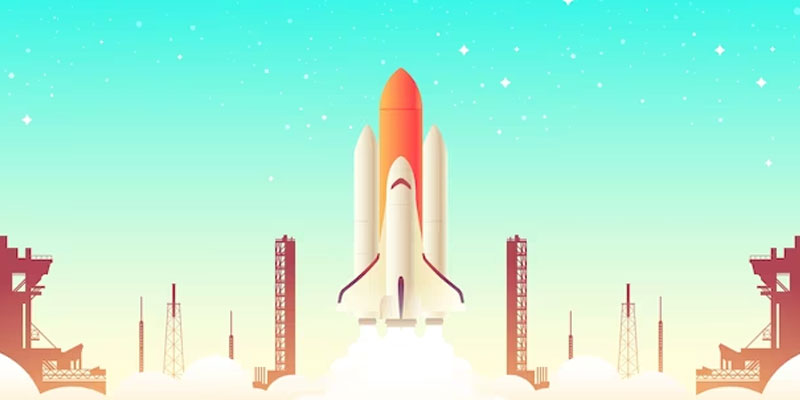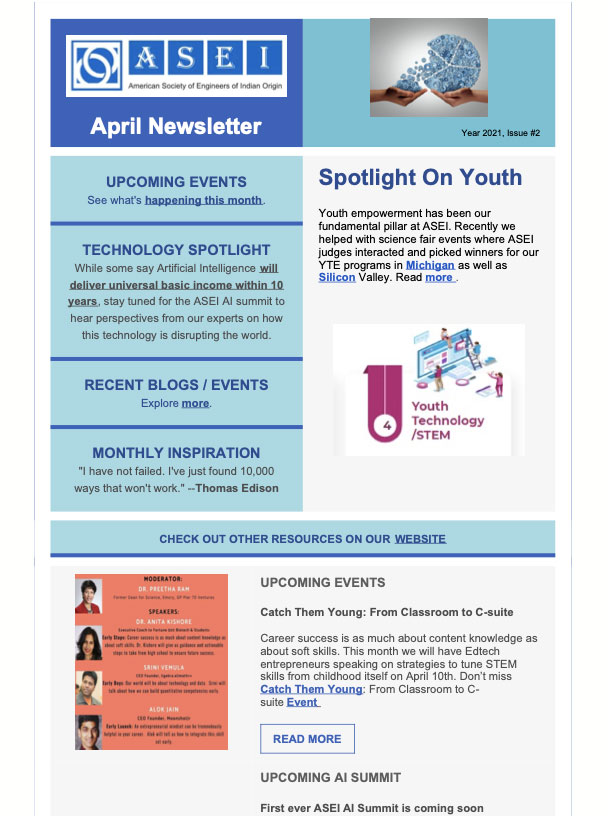Career success is as much about content knowledge as about soft skills. A 2014 survey from CareerBuilder found that 77% of employers surveyed believed soft skills were of equal importance as hard skills/technical competencies. During my time as Dean for Science at Emory University, I was fortunate to encounter many young people starting out on their STEM careers. As I kept up with their careers, I have, over time, developed strong notions on what contributes to success in STEM careers. My hypothesis is that it takes both personality characteristics/attributes and knowledge/competencies to really succeed in one’s chosen career. One without the other is like, yin without the yang, the chole without the bhatura, the iddli without the chutney.
What are these personality attributes? And what are these competencies?
At the ASEI EdTech event on April 10, Anita Kishore, Alok Jain, Srini Vemula and I explored these questions around the framework of helping children and youth get from the “Classroom to the C-Suite”.
Curiosity, creativity, resilience, grit, and empathy are some well recognized traits that contribute to success. These attributes allow one to keep learning, keep growing and respond to crises calmly and thoughtfully. Parents can inculcate these attributes by helping their children reflect on their activities and encourage and discuss their children’s reading. As important as asking thought provoking questions is listening to the responses, offering insights and modelling the behaviors parents would like their children to emulate.
For young professionals engaged in career progression, we agreed with Anita’s three tips:
1) Stay curious – engage in continuous learning by reading, talking to others in your area (and outside), sign up for industry-leading newsletters, etc
2) Experiment – Apply your experimental mindset to all parts of your life. It’s ok to make mistakes. You miss 100% of the shots you don’t take.
3) Ask for feedback from peers, mentors, critics, and supporters – and remain true to your own values. Feedback is a gift – you can accept it or disregard it, but it can be used to improve yourself.
We all understand the importance of gaining skills and competencies, and undoubtedly the most important of them all, would be quantitative skills. Everyone needs math in their lives. Ideally we want our kids to be comfortable playing with math like they do with playdough, moving things, making shapes, enjoying, building, and taking it apart again. Math opens the doors to understanding concepts, which can later lead up to mastery in data science and AI. Igebra.ai, founded by Srini Vemula, has successfully built curricula around this goal: mastery of math and to keep elementary school children joyously , joyously engaged with math, and learning coding and basic ai concepts.
While quantitative proficiencies are key to unlocking technical competencies in this technology driven world, an entrepreneurial mindset can open up new paradigms of thinking and new opportunities. Learning how to be entrepreneurial can be tremendously advantageous as the Future of Work will demand innovation, creativity, and out-of-the box thinking from its employees. Creativity and entrepreneurial thinking is sure to be rewarded not only in startups but also by established corporations. Moonshot jr, the brainchild of Alok Jain, has a curriculum that trains children of all ages to think entrepreneurially! If the notion of elementary school age children creating and selling their products on Amazon, makes you marvel, you need to take a look at Moonshot Jr.
As in anything, it is a question of balance. As a parent, we balance a child’s experiences and explorations, so that there is guidance but also empowerment, and room to discover and grow. We also balance the acquisition of soft skills and as well as of technical competencies. Finally, as professionals, young and old, we balance the various demands of growing our careers, being a good team player, being a patient and collaborative colleague, growing our professional networks with staying current in the field, always learning, always innovating, growing our knowledge base. Help is available at each stage of the journey: executive coaching offered by Anita Kishore, quantitative training at Srini Vemula’s igebra.ai, and entrepreneurship training by Alok Jain’s MoonshotJr.
In a nutshell, quantitative skills and entrepreneurial thinking, enhanced by the soft skills noted above, are uniformly helpful and should be in the toolbox for everyone, the artist or the analyst, the poet or physicist, the social worker or the scientist!
***********************************************************************
This article was contributed by ASEI SiliconValley Boardmember Dr Preetha Ram who serves as General Partner at Pier 70 Ventures and was formerly Dean for Science at Emory University as well as a successful EdTech entrepreneur having founded and exited OpenStudy prior to jumping into the venture capital world. For anyone signing up to avail products or services from MoonShot Jr or Igebra.ai for their family (kids, grandkids, nephews or nieces etc.) or coaching from Dr Anita, there are ASEI Member / sponsorship discounts available. Click here for more info.












